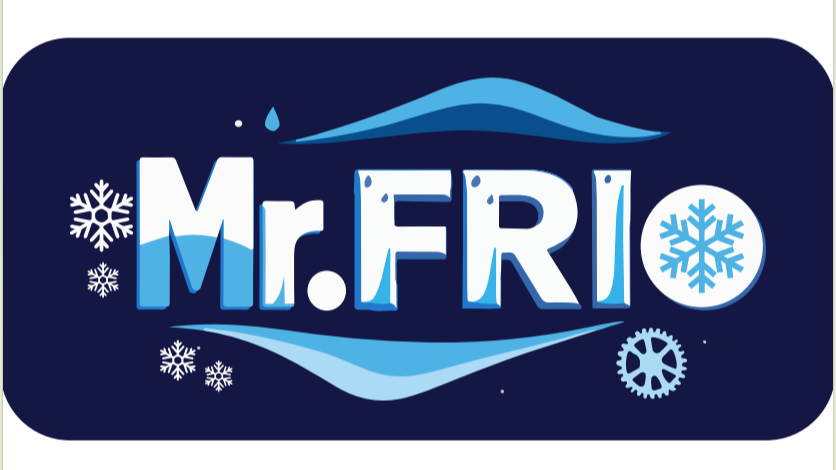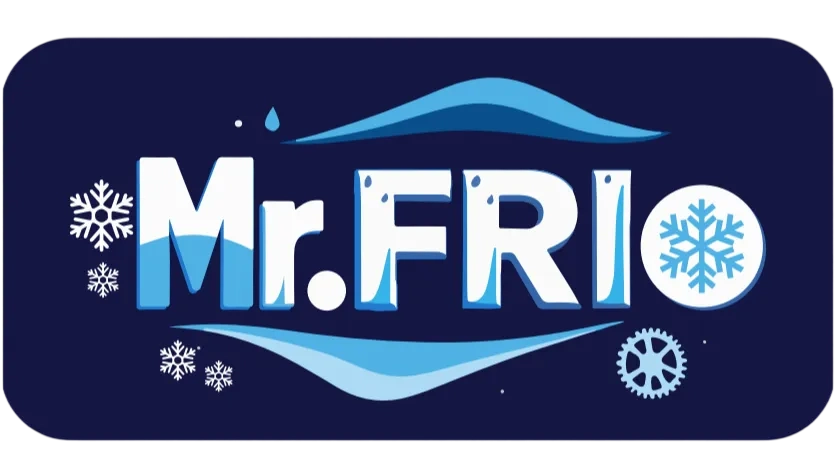Assess Your Convenience Store's Ice Needs
Understanding your store's ice freezer demand based on customer traffic
The first step is to keep an eye on how many people come through the door each day and what kinds of things they buy that depend on ice, such as fountain sodas or cold ready-to-eat snacks. For places that handle around 300 customers or more every day, it's generally wise to invest in ice machines that can make between 150 to 200 pounds of ice daily. Smaller shops with fewer than 150 visitors might get away with something closer to 80-100 pounds worth though. Sales trends matter too. Take convenience stores located close to stadiums for instance, these spots tend to experience massive jumps in ice needs when games are happening nearby, sometimes going up anywhere from 40% all the way to 50%. That kind of surge happens because fans want their drinks cold after cheering at matches.
How to calculate ice machine capacity using daily sales data
Use this formula: (Daily customer count × Avg ice per beverage) + (Chilled product units × Storage ice per item). For example:
- 250 customers × 0.5 lb/soda = 125 lbs
- 150 prepackaged sandwiches × 0.25 lb cooling ice = 37.5 lbs
Total daily need: 162.5 lbs – Round up to a 200 lb capacity unit. Industry research shows a 20–25% buffer prevents shortages during unexpected rushes.
Matching ice production to peak hours and seasonal fluctuations
Programmable ice makers improve load management by 30% through smart scheduling:
- Prioritize production before 11 AM to meet the morning coffee rush
- Reduce output during mid-afternoon lulls (2–4 PM)
- Automatically increase output in summer months, when demand often doubles in temperate climates
This adaptive approach ensures consistent supply without overworking equipment.
Storage capacity requirements to prevent mid-day shortages
Choose units with storage bins holding at least 1.5× your peak hourly ice usage. A store selling 50 drinks/hour requires:
50 drinks × 0.5 lb ice = 25 lb/hour usage – Minimum 37.5 lb storage
Glass-door merchandisers enhance visibility while reducing melt loss by 15–20% compared to open-top bins, maintaining both quality and availability.
Compare Ice Types and Freezer Performance for Customer Satisfaction
Cubelet vs. Crescent Ice: Which Suits Convenience Store Applications Best?
Cubelet ice those small, heavy cubes that just won't melt works best for carbonated drinks when we need something cold fast without watering them down. Then there's crescent shaped ice, which is lighter inside and has that hollow center. It gets drinks chilled quicker than regular cubes and looks pretty cool sitting next to bottles in those self serve dispensers too. According to industry numbers, around two thirds of city corner stores go for cubelets when stocking their soda coolers. But if the store wants to showcase bottles prominently, they tend to stock up on crescents instead since they stack better and don't sink into the drink as much.
Consumer Preferences and the Role of Ice Type in Beverage Quality
A 2024 BevTech Consumer Insights Study found 62% of customers perceive drinks with uniform ice shapes as “premium,” increasing their likelihood of repeat visits. Irregular ice melts inconsistently, altering flavor and texture in products like iced coffee or slurpees. For instance:
- Caramel Slurpees: Cubelet ice maintains flavor integrity 18% longer than fragmented ice
- RTD Cocktails: Crescent ice preserves carbonation due to slower surface-area melt
Matching ice type to beverage format elevates perceived quality and customer satisfaction.
Operational Efficiency Gains from Consistent Ice Shape and Size
Precisely engineered ice freezers reduce beverage prep time by 22% (National Restaurant Association, 2023) through:
- Portion control standardization – consistent ice volume per cup
- Reduced dispenser jams – uniform shapes prevent cube pile-up
- Energy savings – stable production cycles require 15% less compressor cycling
This precision enables staff to serve 35–40 customers per hour during peak periods without delays.
Ensure Food Safety and Optimal Temperature Control in Ice Freezers
Maintaining precise temperatures in commercial ice freezers isn’t just about product quality—it’s a legal requirement for food safety. Research indicates that 10% of foodborne illnesses stem from improper cold storage, with bacterial growth accelerating above 0°F (-18°C).
Maintaining Safe Temperature Range for Food Safety (-10°F to 0°F)
Ice freezers should maintain -10°F to 0°F (-23°C to -18°C) to inhibit pathogen growth and preserve ice clarity. Units equipped with dual thermostats and door frame heaters reduce temperature fluctuations by 73% during frequent access (Cold Chain Compliance Report 2023), ensuring safe, high-quality ice.
Advanced Temperature Control Features in Modern Ice Freezer Units
Microprocessor-controlled defrost cycles and vacuum-insulated panels deliver 98% temperature stability in high-traffic environments. These features not only meet NSF/ANSI 12 sanitation standards but also reduce energy consumption by 19% compared to traditional models.
How Improper Cooling Affects Ice Quality and Hygiene
Temperatures above 5°F (-15°C) produce porous ice crystals that trap airborne contaminants—responsible for 32% of beverage-related customer complaints in convenience settings (National Restaurant Association 2022). Frost-free models with UV-C light sanitation reduce microbial loads by 99.7% in third-party testing, significantly improving hygiene.
Frost Buildup vs. Energy Draw: Balancing Low-Temp Performance
ENERGY STAR-certified ice freezers limit frost accumulation to 0.03” per cycle using variable-speed compressors—a 64% improvement over baseline models—while maintaining consistent sub-zero conditions (AHRI Performance Data 2024). This balance reduces maintenance needs and energy waste.
Optimize Store Layout and Merchandising with Strategic Ice Freezer Placement
Space Considerations for Compact Urban Convenience Stores
Urban stores averaging 800–1,200 sq. ft. benefit from space-saving designs like wall-mounted or slim-profile under-counter ice freezers. These models provide 15–20 cubic feet of storage per 50 daily customers while minimizing aisle congestion and preserving valuable floor space.
Upright Glass Door Merchandisers vs. Chest or Island Freezers for Visibility
Glass-front upright freezers increase ice visibility by 40% compared to chest models (2024 Retail Display Report), making them ideal near checkout lanes or beverage coolers. Island freezers with top-opening lids maintain colder average temperatures (-5°F vs. 0°F), offering better thermal efficiency despite lower front visibility.
Countertop Display Freezers for High-Impulse Purchase Zones
Placing 2–4 cubic foot countertop ice freezers near snack racks or bottled drinks boosts bagged ice sales by 22% through impulse purchases (2023 Convenience Store Metrics Study). Positioning units at 48" height—average eye level for adults—maximizes visibility and accessibility.
Merchandising Strategies That Boost Frozen Product Visibility and Sales
Rotate premium ice brands weekly in "golden zones" (middle shelves at 54–60" height) and use LED shelf lighting to draw attention. Stores using color-coded bin labels for different ice types report 18% faster inventory turnover due to improved customer navigation and decision speed.
Reduce Costs and Future-Proof Operations with Energy-Efficient, Smart Ice Freezers
Energy efficiency ratings and long-term operational cost savings
Modern energy-efficient ice freezers reduce operating costs by up to 30% compared to conventional models, according to industry efficiency studies (2025). Innovations like variable-speed compressors and ENERGY STAR-certified insulation minimize energy waste while maintaining safe storage temperatures. Units with IoT-enabled diagnostics proactively flag maintenance issues, reducing downtime by 40% in commercial trials.
Comparing ENERGY STAR models for optimal power consumption
Prioritize models with adaptive defrost cycles and door alarms, which consume 15–20% less energy than standard units. A 2025 analysis found stores recoup upgrade costs within 18 months through utility savings alone.
Case Study: ROI after upgrading to high-efficiency ice freezer units
A 24-hour convenience store chain reduced annual energy expenses by $8,400 after replacing six aging freezers with ENERGY STAR units, achieving full return on investment in just 11 months—even during peak summer demand.
IoT-enabled monitoring for predictive maintenance and alerts
Real-time sensors track compressor health and ice production rates, alerting managers to temperature deviations exceeding ±2°F. This capability prevents costly melt cycles that can waste 200–300 kWh monthly in inefficient units.
Integrating smart diagnostics and remote management into daily operations
Cloud-based dashboards allow multi-location oversight, enabling managers to optimize performance across stores. Automatic adjustments to defrost schedules during off-peak hours cut energy costs by 12–18%, streamlining operations and reducing manual intervention.
FAQ
What factors should a convenience store consider when choosing an ice machine?
Stores should consider customer traffic, types of ice-dependent products sold, peak hours, and seasonal demand fluctuations to determine the appropriate ice machine capacity.
How does ice type impact customer satisfaction?
Certain ice types, like cubelet or crescent, better suit specific beverages. Uniform ice shapes are perceived as more premium and can significantly affect repeat visits and overall satisfaction.
Why is maintaining proper temperatures in ice freezers important?
Maintaining accurate freezer temperatures is crucial for food safety, preventing bacterial growth, and ensuring ice clarity and quality.
How can store layout impact ice sales?
Strategic placement of ice freezers, such as near high-traffic areas and using glass-door models, can increase visibility and impulse purchases, ultimately boosting sales.
What are the benefits of using energy-efficient ice freezers?
Energy-efficient freezers reduce operating costs, minimize energy waste, and maintain safe storage conditions, providing long-term savings and reduced environmental impact.
Table of Contents
- Assess Your Convenience Store's Ice Needs
- Compare Ice Types and Freezer Performance for Customer Satisfaction
- Ensure Food Safety and Optimal Temperature Control in Ice Freezers
- Optimize Store Layout and Merchandising with Strategic Ice Freezer Placement
-
Reduce Costs and Future-Proof Operations with Energy-Efficient, Smart Ice Freezers
- Energy efficiency ratings and long-term operational cost savings
- Comparing ENERGY STAR models for optimal power consumption
- Case Study: ROI after upgrading to high-efficiency ice freezer units
- IoT-enabled monitoring for predictive maintenance and alerts
- Integrating smart diagnostics and remote management into daily operations
- FAQ


